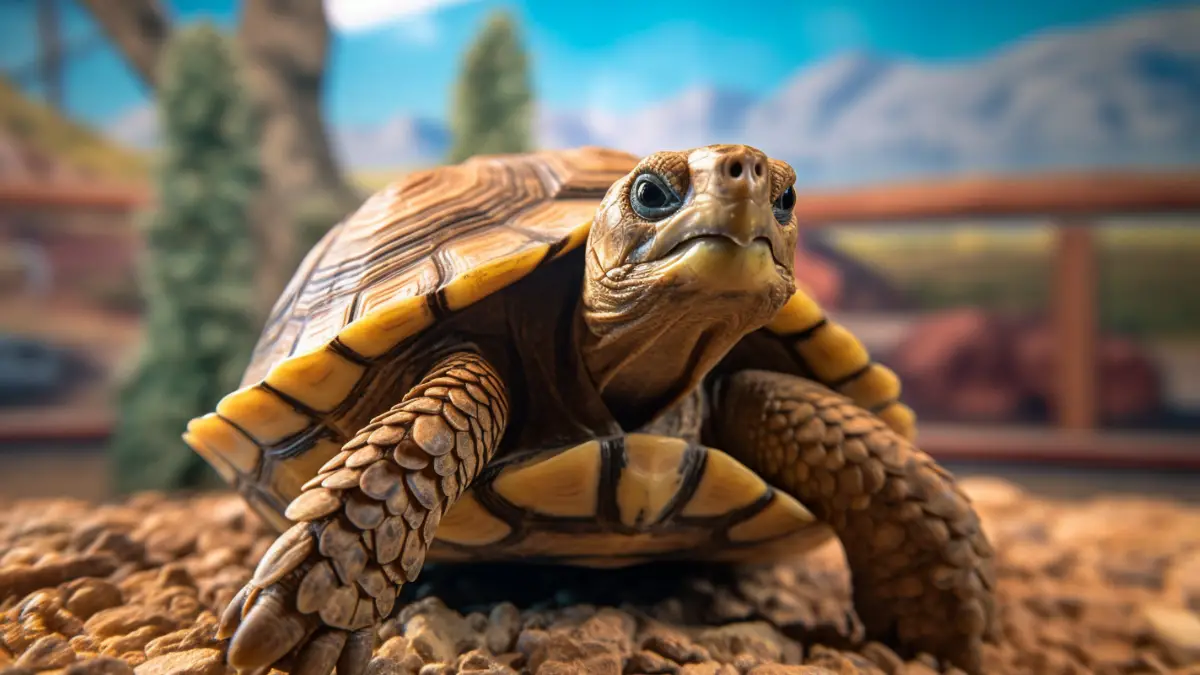Are Tortoises Reptile Or Amphibian? Exploring their Classification Puzzle
Tortoises are captivating creatures that stir curiosity. They have behaviors that can leave you wondering about their classification. Most people also confuse them with turtles. These have similar body shapes and characteristics, plus they live in water like amphibians.
So, are tortoises reptile or amphibian? Well, these slow animals are reptiles. They are cold-blooded and have scales. They also have terrestrial tendencies that align them with their reptilian kin. What’s more, even their classification class screams they are reptiles and not amphibians.
In this write-up, we will unravel the complexities of tortoise classification. We will also talk about all the misconceptions about them being amphibians. So, keep reading to unearth the tale of the classification of these animals.
Are Tortoises Reptile Or Amphibian? An Overview of Their Classification
Contents
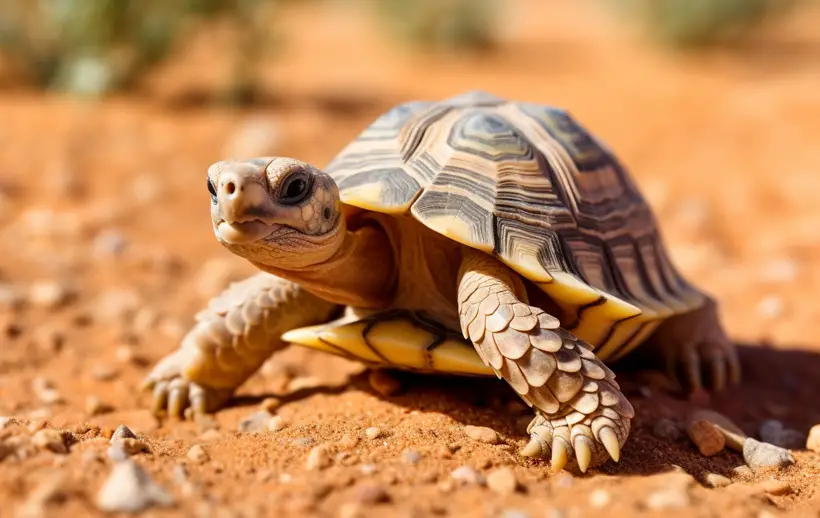
Here is a table illustrating the classification of tortoises from kingdom to genus and species:
| Taxonomic Level | Classification |
|---|---|
| Kingdom | Animalia |
| Phylum | Chordata |
| Class | Reptilia |
| Order | Testudines |
| Suborder | Cryptodira |
| Family | Testudinidae |
| Subfamily | Testudinidae |
| Genus | Varies by species |
| Species | Varies by species |
What Makes Tortoises Reptiles?
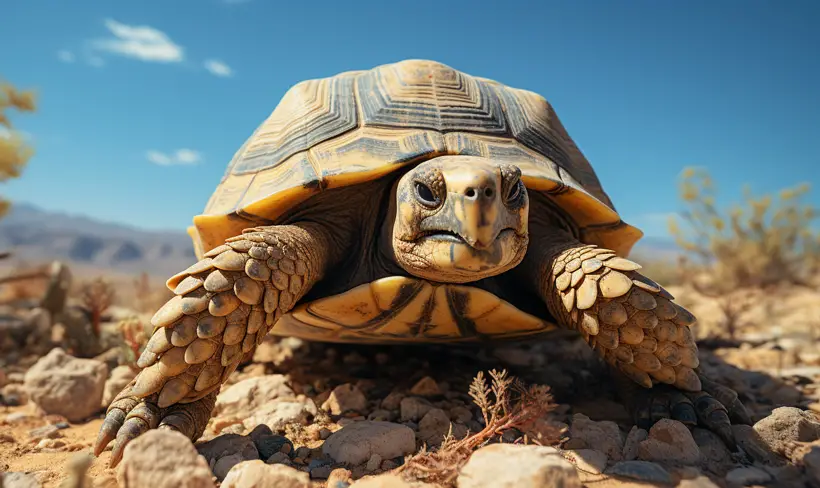
Here are reasons why these creatures are considered reptiles:
1. Cold-blooded Animals
Cold-bloodedness, or ectothermy, is at the core of reptilian identity. It sets tortoises to be true reptiles. Their body temperature changes with the environment around them. Tortoise, being one of them, is cold-blooded too.
Now, here is where they differ from amphibians. Both are cold-blooded but reptiles need to absorb a lot of heat from direct sun. Amphibians can survive by absorbing heat from partial sun or their surroundings in water.
2. Scaly Skin and Protective Shell
Tortoises wear a reptilian badge throughout their skin. They have mosaic tiny scales that are their natural armor. The scales are mainly composed of keratin, a compound similar to that in your fingernails. Other than protection, the scales act as a barrier to water loss.
Amphibians do not possess scales or a tough shell. They have smooth skin that is often moist. Their skin needs to be this moist for breathing. They also spend most of their time in water or underground. So, they do not need a shell or scales for protection.

3. Their Classification
These slow creatures have their spot in the “Reptilia.” This is a class that houses a diverse array of animals that share similar defining characteristics. Scientists looked at tortoises and examined all their internal, external, and behavioral characteristics. They found a snug fit for them to be reptiles.
In contrast, amphibians, like frogs, have a different class called “Amphibia.” The fact that tortoises are not under this classification should tell you they can’t be amphibians. They do not even share most characteristics with animals like frogs, toads, and salamanders. These are regarded as amphibians.
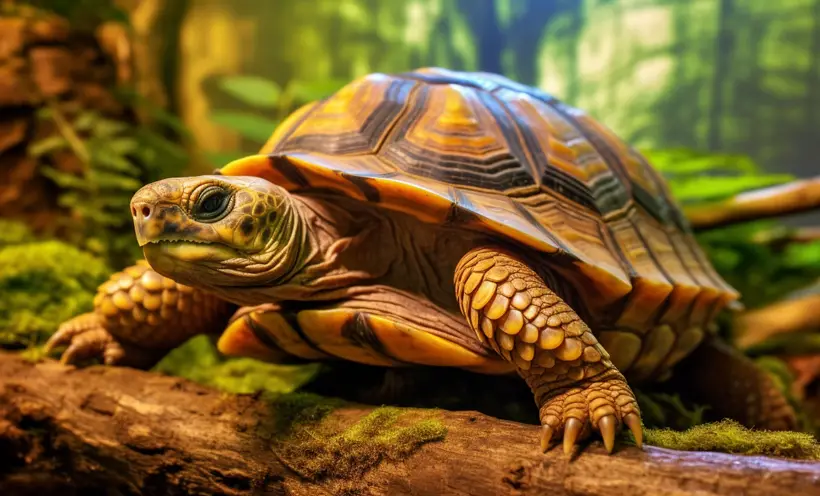
4. Terrestrial Life
Most reptiles have their choice of habitat as solid ground. This is the same case as tortoises. They prefer exploring rocky landscapes and grassy plains. They are designed to live and survive on land. And do not confuse tortoises with turtles. Tortoises never go anywhere near water.
This is not the case for amphibians. They lay their eggs in water and their young life starts in water. However, keep in mind that amphibians can also live on land. But their main habitat is underground or in water.
5. Breathing Mechanism
Reptiles breathe through their lungs. Tortoise, being one of them, exhibits this behavior. It’s only their lungs that can extract oxygen and release carbon dioxide.
Amphibians, on the other hand, have dual breathing. They even start life with gills when underwater as tadpoles. Later, they will develop lungs for breathing. However, when underwater, they use their skin to breathe.
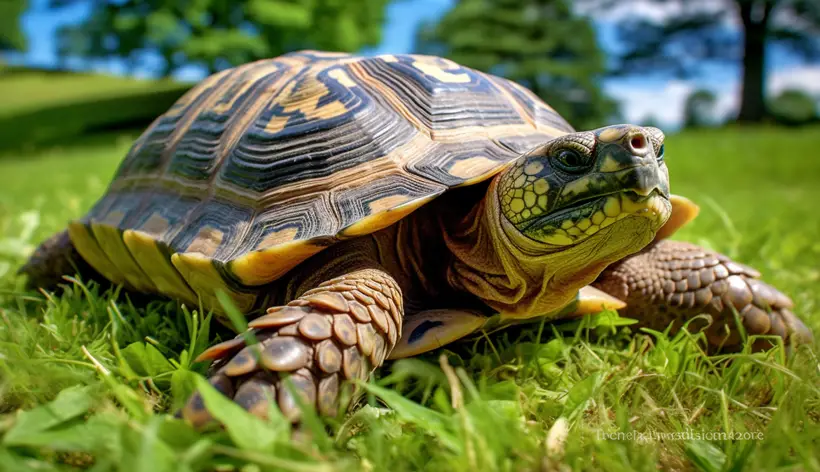
6. Excretion Substances
Reptiles excrete uric acid. This is a concentrated waste product that has little water content. This strategy helps them in waste removal while conserving water. Most reptiles live in arid environments and need water. And tortoises adhere to this, hence they are reptiles.
This is not the case with amphibians. As mentioned before, they even live in water. Their excretion substance is called urea. This contains more water. They do not need to conserve it as they are already living in it.
7. Egg Fertilization
All reptiles have external fertilization of their eggs. This means that before the egg leaves its feminine body, it is already fertilized. They engage in mating before laying eggs.
Amphibians, on the other hand, rely on external fertilization. The eggs laid by a female are not viable. They must be fertilized externally by the male sperm to carry life. Tortoises exhibit internal fertilization and are, hence, not amphibians.
Reptilian Care Guide for Your Tortoise
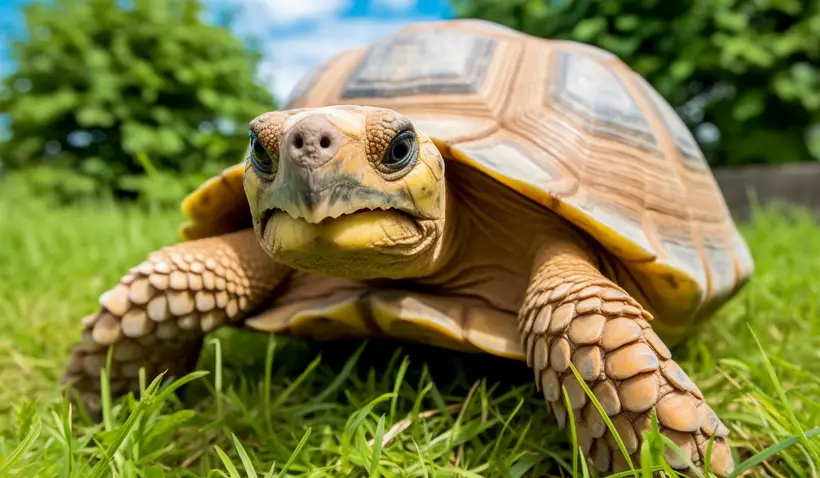
Now you know that these slow creatures are reptiles. Here are some of the things to keep in mind when taking care of them:
- Habitat mimicry: Reptiles thrive best in environments that resemble their natural habitats. So, create an enclosure that mirrors the tortoise’s native surroundings.
- Temperature management: Unless it’s during their hibernation period. We recommend having warm temperatures as these are cold-blooded creatures. Also, ensure you have an enclosure somewhere with cooler temperatures.
- Hydration: Provide access to a shallow water dish. Tortoises do not need to swim. So, do not think of giving them water in a huge basin.
- Enrichment items: Even though tortoises are slow, they appreciate mental stimulation. So give them a variety of items like hiding spots, tunnels and so on to explore.
FAQs
Here are answers to some of the questions you might have regarding tortoises.
Yes. Some species undergo a period of dormancy. This behavior helps them conserve energy when food is scarce and temperatures are too low for scavenging. However, keep in mind that not all tortoises hibernate.
Yes. All are part of the reptilian order Testudines. They share lots of common traits, like a protective shell. However, they are different. Turtles and terrapins are aquatic. They inhabit freshwater and marine environments. Tortoises, on the other hand, are land-dwelling only.
Yes. Tortoises are susceptible to various illnesses. These include respiratory infections, nutritional deficiencies, and shell problems. Give them a balanced diet and ensure you visit a veterinary doctor once in a while.
Conclusion
The above information fully answers, are tortoises reptile or amphibian? The verdict is clear that these creatures are actually reptiles. From their scaly skin to their terrestrial habits, tortoises embody reptile characteristics.
Understanding the true nature of these creatures is paramount for any caregiver. Now that you know they are reptiles and not amphibians, you know how to take care of them. You are best equipped to give them the best habitat, diet, and nurturing.

